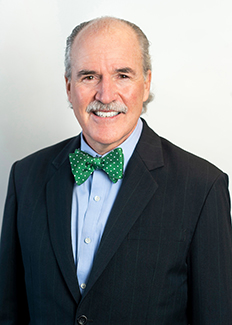Fogarty’s Role in the “Make America Healthy Again” Agenda
September/October 2025 | Volume 24 Number 5
As the United States embarks on the
Make America Healthy Again (MAHA) agenda, it is worth reflecting on how global health research collaboration contributes directly to improving health here at home. The MAHA goals, including reducing chronic disease in children and improving health across the lifespan, cannot be solved in isolation. The global research collaborations of the Fogarty International Center and the National Institutes of Health offer a proven model.
 Read recent commentary on global health research issues from current and immediate past directors of the Fogarty International Center.
Read recent commentary on global health research issues from current and immediate past directors of the Fogarty International Center.
Learning from global experience
The U.S. ranks poorly compared with other high-income countries on many health indicators, including obesity, diabetes, life expectancy, and diet-related disease in children. Through NIH-supported collaborations, we can learn from countries that have made measurable progress in these very areas. For example, Fogarty-supported research in Latin America has documented how front-of-pack labeling, school-based nutrition programs, and restrictions on ultra-processed foods reduce childhood obesity. These findings are directly relevant as U.S. policymakers grapple with rising rates of pediatric obesity and the associated lifetime burden of diabetes and cardiovascular disease.
Comparative research on environmental health in Asia, Africa, and Latin America has yielded low-cost tools to monitor pesticide and chemical exposures. These methods, developed under resource-constrained conditions, can be applied domestically to improve surveillance and reduce chronic disease risk. The MAHA agenda emphasizes upstream prevention, and global science provides models for how this can be achieved affordably and effectively.
Building capacity that endures
Fogarty’s mission has always been to strengthen research capacity in low- and middle-income countries (LMICs). Over decades, we have supported the training of more than 8,000 scientists worldwide. Many of these individuals have gone on to lead national research institutions and guide major global health programs. Supporting people ensures that U.S. investments in global science are multiplied many times over, with returns that reach our own shores.
Importantly, capacity building abroad directly supports U.S. preparedness. During the COVID-19 pandemic, long-established partnerships enabled rapid data collection, viral sequencing, and evaluation of vaccines and therapeutics in LMICs. These collaborations informed global responses while providing early warning and critical insights for protecting Americans.
Implementation across borders
Another lesson from global partnerships is the power of implementation science. Many LMICs have pioneered cost-effective, community-based approaches to chronic disease prevention and care. For example, team-based models for hypertension management developed in Nigeria and South Africa are now informing how we address cardiovascular disease in underserved U.S. communities. Similarly, mobile health tools created to deliver mental health care in Peru and Brazil are being studied as low-cost options for American patients with depression and diabetes.
By supporting research in diverse settings, Fogarty and NIH help identify what works, why it works, and how it can be adapted. This body of evidence provides the MAHA initiative with tested strategies for improving health outcomes in rural and resource-limited U.S. settings.
Value for U.S. taxpayers
Some may ask:
Why should the U.S. invest in research beyond its borders when health needs at home remain pressing? The answer is clear—global research produces tangible returns that improve U.S. health. It generates cohorts of highly trained scientists who can partner with U.S. teams; delivers interventions tested under real-world conditions; and provides comparative benchmarks that allow us to measure our progress. Global partnerships also accelerate innovation pipelines, bringing forward new diagnostics, therapeutics, and digital tools that strengthen our domestic health systems.
NIH’s international research portfolio aligns well with MAHA’s priorities. Current programs address brain and nervous system disorders, chronic and noncommunicable diseases, environmental and occupational health, multimorbidity management, and mobile health technologies. Each is designed with an eye toward dual benefits: advancing science abroad while yielding health gains for American communities.
The way forward
Decades of Fogarty’s experience have shown that investing in global health research is one of the smartest ways to improve health at home. To maximize the impact of MAHA, we should integrate global evidence into U.S. policy and practice by:
- Using global data for benchmarking: tracking MAHA’s progress against international standards.
- Adopting proven interventions: piloting strategies in nutrition, active living, and exposure reduction that have succeeded elsewhere.
- Enhancing policy learning exchanges: engaging with countries that have reduced chronic disease burdens effectively.
- Leveraging global innovation pipelines: drawing on NIH’s international collaborations for tools and solutions relevant to U.S. needs.
The MAHA initiative comes at a pivotal time. America faces significant health challenges, but it also has unmatched opportunities to learn from and contribute to global science. Fogarty’s and NIH’s international collaborations have built a vast reservoir of knowledge, capacity, and innovation that can be harnessed for the American people.
By recognizing the impacts of global health research, we can ensure that our investments pay dividends both abroad and here at home—making America truly healthy.
More information
Updated November 17, 2025
To view Adobe PDF files,
download current, free accessible plug-ins from Adobe's website.